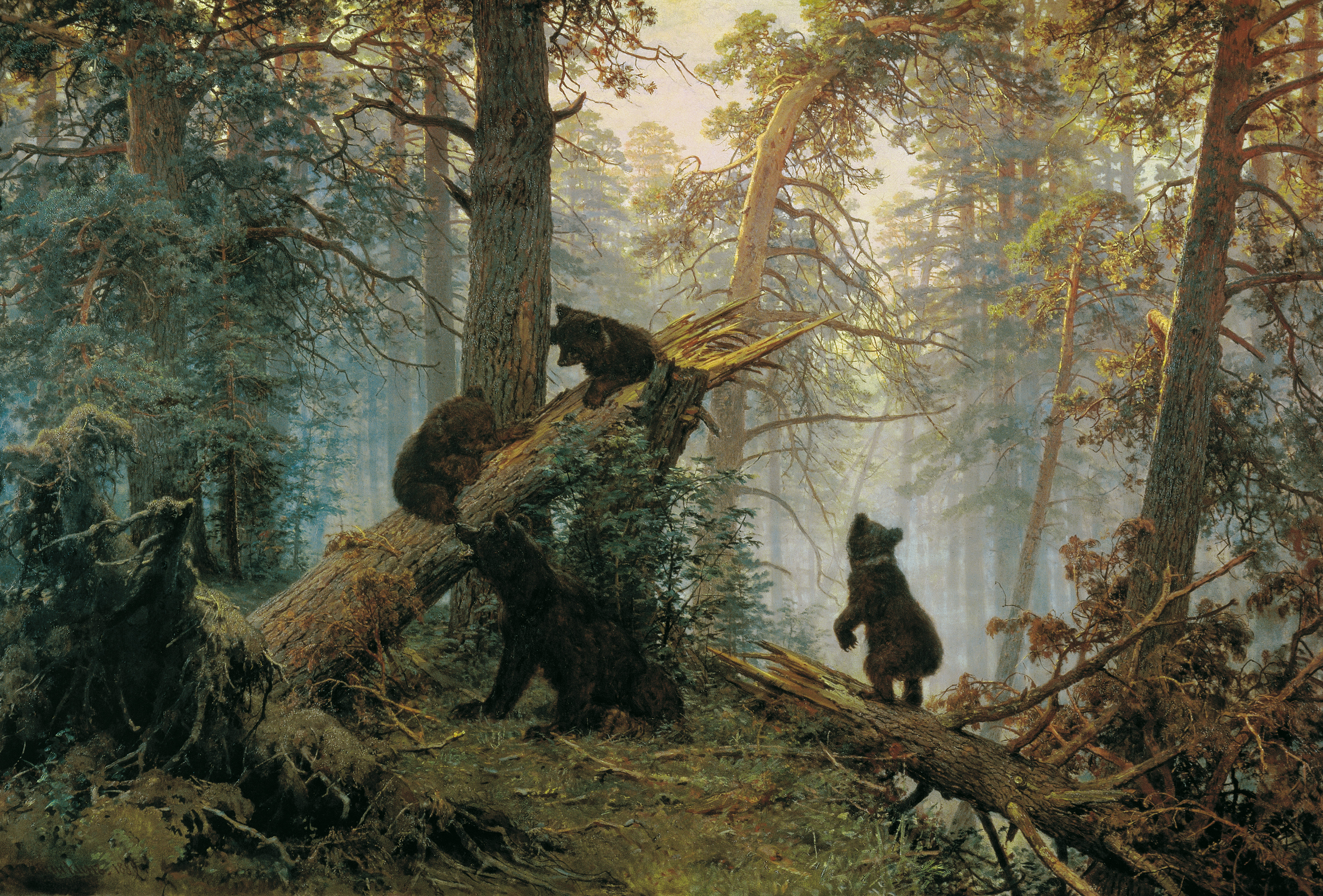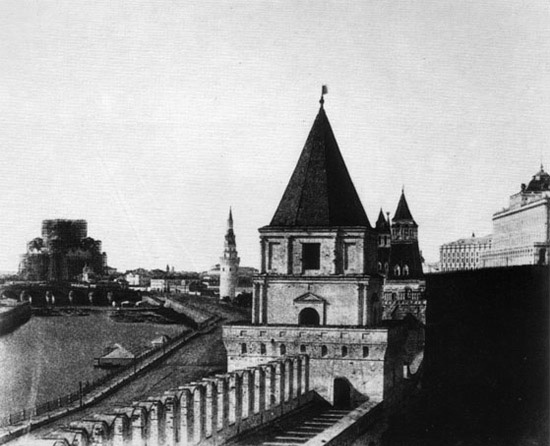|
Surikov
Vasily Ivanovich Surikov (Russian: Василий Иванович Суриков; 24 January 1848 – 19 March 1916) was a Russian Realist history painter. Many of his works have become familiar to the general public through their use as illustrations. Biography He was born to an old family descending from Don Cossacks that had settled in Siberia.Brief biography @ RusArtNet. His father was a Collegiate Registrar, a civil service rank that often served as s. In 1854, as a result of his father being reassigned, the family moved to the village of [...More Info...] [...Related Items...] OR: [Wikipedia] [Google] [Baidu] |
Peredvizhniki
Peredvizhniki ( rus, Передви́жники, , pʲɪrʲɪˈdvʲiʐnʲɪkʲɪ), often called The Wanderers or The Itinerants in English, were a group of Russian realist artists who formed an artists' cooperative in protest of academic restrictions; it evolved into the ''Society for Travelling Art Exhibitions'' in 1870. History In 1863 a group of fourteen students decided to leave the Imperial Academy of Arts in Saint Petersburg. The students found the rules of the Academy constraining; the teachers were conservative and there was a strict separation between high and low art. In an effort to bring art to the people, the students formed an independent artistic society; The Petersburg Cooperative of Artists (Artel). In 1870, this organization was largely succeeded by the Association of Travelling Art Exhibits (Peredvizhniki) to give people from the provinces a chance to follow the achievements of Russian Art, and to teach people to appreciate art. The society maintained ind ... [...More Info...] [...Related Items...] OR: [Wikipedia] [Google] [Baidu] |
The Morning Of The Streltsy Execution
''The Morning of the Streltsy Execution'' is a painting by Vasily Ivanovich Surikov, painted in 1881. It illustrates the public execution after the Streltsy's failed attempted uprising before the walls of the Kremlin. It shows the display of power the Russian government had during the late years of the 17th century. The painting can be found at the Tretyakov Gallery The State Tretyakov Gallery (russian: Государственная Третьяковская Галерея, ''Gosudarstvennaya Tretyâkovskaya Galereya''; abbreviated ГТГ, ''GTG'') is an art gallery in Moscow, Russia, which is considered th ... in Moscow. References {{DEFAULTSORT:Morning of the Streltsy Execution 1881 paintings Collections of the Tretyakov Gallery Cultural depictions of Peter the Great ... [...More Info...] [...Related Items...] OR: [Wikipedia] [Google] [Baidu] |
History Painting
History painting is a genre in painting defined by its subject matter rather than any artistic style or specific period. History paintings depict a moment in a narrative story, most often (but not exclusively) Greek and Roman mythology and Bible stories, opposed to a specific and static subject, as in portrait, still life, and landscape painting. The term is derived from the wider senses of the word ''historia'' in Latin and ''histoire'' in French, meaning "story" or "narrative", and essentially means "story painting". Most history paintings are not of scenes from history, especially paintings from before about 1850. In modern English, "historical painting" is sometimes used to describe the painting of scenes from history in its narrower sense, especially for 19th-century art, excluding religious, mythological, and allegorical subjects, which are included in the broader term "history painting", and before the 19th century were the most common subjects for history paintings. His ... [...More Info...] [...Related Items...] OR: [Wikipedia] [Google] [Baidu] |
Krasnoyarsk
Krasnoyarsk ( ; rus, Красноя́рск, a=Ru-Красноярск2.ogg, p=krəsnɐˈjarsk) (in semantic translation - Red Ravine City) is the largest city and administrative center of Krasnoyarsk Krai, Russia. It is situated along the Yenisey River, and is the second-largest city in Siberia after Novosibirsk, with a population of over 1.1 million. Krasnoyarsk is an important junction of the renowned Trans-Siberian Railway, and is one of the largest producers of aluminium in the country. The city is known for its natural landscape; author Anton Chekhov judged Krasnoyarsk to be the most beautiful city in Siberia. The Stolby Nature Sanctuary is located 10 km south of the city. Krasnoyarsk is a major educational centre in Siberia, and hosts the Siberian Federal University. In 2019, Krasnoyarsk was the host city of the 2019 Winter Universiade, the third hosted in Russia. Geography The total area of the city, including suburbs and the river, is .Poexaly.ru. Krasnoyars ... [...More Info...] [...Related Items...] OR: [Wikipedia] [Google] [Baidu] |
History Painter
History painting is a genre in painting defined by its subject matter rather than any artistic style or specific period. History paintings depict a moment in a narrative story, most often (but not exclusively) Greek and Roman mythology and Bible stories, opposed to a specific and static subject, as in portrait, still life, and landscape painting. The term is derived from the wider senses of the word ''historia'' in Latin and ''histoire'' in French, meaning "story" or "narrative", and essentially means "story painting". Most history paintings are not of scenes from history, especially paintings from before about 1850. In modern English, "historical painting" is sometimes used to describe the painting of scenes from history in its narrower sense, especially for 19th-century art, excluding religious, mythological, and allegorical subjects, which are included in the broader term "history painting", and before the 19th century were the most common subjects for history paintings. His ... [...More Info...] [...Related Items...] OR: [Wikipedia] [Google] [Baidu] |
Beryozovo, Khanty-Mansi Autonomous Okrug
Beryozovo (russian: Берёзово; Khanty: Сўмт вош, ''Sŭmt-voš''; Mansi: Хāльӯс, ''Hāļūs'') is an urban locality (an urban-type settlement) and the administrative center of Beryozovsky District of Khanty-Mansi Autonomous Okrug, Russia, located on the Ob River. Population: Geography It is situated on three hills on the left bank of the Severnaya Sosva River, at its junction with the Ob River. It has more than once suffered from conflagrations, including fires in 1719 and 1808. The yearly mean temperature is , with the low being . History Some ill-documented Russian trade took place in the area before the Russian conquest of Siberia. Beryozovo was founded in 1593 on the Severnaya Sosva route across the Ural Mountains to the fur-rich Mangazeya region. Ostyaks besieged the settlement in 1592, 1697, and 1608. It grew into a town of Beryozov () in Tobolsk Governorate. By the late 17th century most trade had shifted south to Verkhoturye. Prince Menshikov, the ... [...More Info...] [...Related Items...] OR: [Wikipedia] [Google] [Baidu] |
Alexander Danilovich Menshikov
Prince Aleksander Danilovich Menshikov (russian: Алекса́ндр Дани́лович Ме́ншиков, tr. ; – ) was a Russian statesman, whose official titles included Generalissimo, Prince of the Russian Empire and Duke of Izhora (Duke of Ingria), Prince of the Holy Roman Empire, Duke of Cosel. A highly appreciated associate and friend of Tsar Peter the Great, he was the ''de facto'' ruler of Russia for two years. Early life Menshikov was born on in Moscow. Historian Paul Bushkovitch argues that Menshikov was not an aristocrat and was most likely descended from servants of the palace stables, who among others made up the first soldiers of Peter's 'toy armies.' As the legend (dating from around 1710) goes, he was making a living on the streets of Moscow as a vendor of stuffed buns known as pirozhki at the age of twenty. His fine appearance and witty character caught the attention of Franz Lefort, Peter's first favourite, who took him into his service and finally ... [...More Info...] [...Related Items...] OR: [Wikipedia] [Google] [Baidu] |
Pavel Tretyakov
Pavel Mikhaylovich Tretyakov (russian: Па́вел Миха́йлович Третьяко́в; 27 December 1832 – 16 December 1898) was a Russian businessman, patron of art, collector, and philanthropist who gave his name to the Tretyakov Gallery and Tretyakov Drive in Moscow. His brother Sergei Tretyakov was also a famous patron of art and a philanthropist. Childhood Together with other Moscow businessmen he acted as the founder of the Moscow merchant bank (becoming one of its heads), the Moscow commercial and industrial company, some other large firms. He amassed a considerable fortune (4.4 million rubles), consisting of real estate (5 houses in Moscow), securities, money and bills. Collecting art Tretyakov started to collect art in 1854 at the age of 22; his first purchase was 10 canvases by Old Dutch masters. He laid down for himself the aim of creating a Russian National Gallery. In his collection Tretyakov included the most valuable and remarkable products, first of ... [...More Info...] [...Related Items...] OR: [Wikipedia] [Google] [Baidu] |
Pavel Chistyakov
Pavel Petrovich Chistyakov (russian: Павел Петрович Чистяков; 5 July 1832, Prudy, Vesyegonsky Uyezd, Tver Governorate — 11 November 1919, Saint Petersburg) was a Russian Imperial painter and art teacher; known for historical and genre scenes as well as portraits. Biography His father was a freed serf who had worked as an estate manager. Despite the financial burdens, he saw to it that his son had a proper education; first at a parish school in Krasny Kholm, then the secondary school in Bezhetsk.Brief biography @ Russian Paintings. In 1849, he entered the , where he studied with |
Cathedral Of Christ The Saviour
The Cathedral of Christ the Saviour ( rus, Храм Христа́ Спаси́теля, r=Khram Khristá Spasítelya, p=xram xrʲɪˈsta spɐˈsʲitʲɪlʲə) is a Russian Orthodox cathedral in Moscow, Russia, on the northern bank of the Moskva River, a few hundred metres southwest of the Kremlin. With an overall height of , it is the third tallest Orthodox Christian church building in the world, after the People's Salvation Cathedral in Bucharest, Romania and Saints Peter and Paul Cathedral in Saint Petersburg, Russia. The current church is the second to stand on this site. The original church, built during the 19th century, took more than 40 years to build, and was the scene of the 1882 world premiere of the ''1812 Overture'' composed by Tchaikovsky. It was destroyed in 1931 on the order of the Soviet Politburo. The demolition was supposed to make way for a colossal Palace of the Soviets to house the country's legislature, the Supreme Soviet of the USSR. Construction starte ... [...More Info...] [...Related Items...] OR: [Wikipedia] [Google] [Baidu] |
Vagankovo Cemetery
Vagankovo Cemetery (russian: Ваганьковское кладбище, Vagan'kovskoye kladbishche), established in 1771, is located in the Presnya district of Moscow. It started in the aftermath of the Moscow plague riot of 1771 outside the city proper, so as to prevent the contagion from spreading. Half a million people are estimated to have been buried at Vagankovo throughout its history. As of 2010, the existing cemetery contains more than 100,000 graves. The vast necropolis contains the mass graves from the Battle of Borodino, the Battle of Moscow, and the Khodynka Tragedy. It is the burial site for a number of people from the artistic and sports community of Russia and the old Soviet Union. William Taubman claims that during the Great Purge "alcohol-soused guards would execute weeping prisoners" after they had dug their graves in the cemetery. The cemetery is served by several Orthodox churches constructed between 1819 and 1823 in the Muscovite version of the Empire styl ... [...More Info...] [...Related Items...] OR: [Wikipedia] [Google] [Baidu] |
Imperial Society For The Encouragement Of The Arts
The Imperial Society for the Encouragement of the Arts (Russian: Императорское общество поощрения художеств (ОПХ)) was an organization devoted to promoting the arts that existed in Saint Petersburg from 1820 to 1929. It was the oldest society of its kind in Russia. Until 1882 it was called the "Society for the Encouragement of Artists". After 1917, it became the "All-Russian Society for the Encouragement of the Arts". History The Society was founded by a group of influential patrons (including Ivan Alexeyevich Gagarin, Pyotr Andreyevich Kikin and Alexander Dmitriev-Mamonov) with the aim of assisting development in the fine arts, the diffusion of knowledge related to the arts, and the education of painters and sculptors.History of the Society @ the [...More Info...] [...Related Items...] OR: [Wikipedia] [Google] [Baidu] |
.jpg)






_01.jpg)

